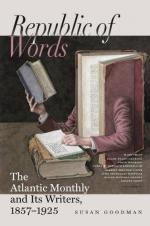It falsely alleged a second axiom, Similia similibus curantur,—“Like is cured by like,”—as the basis of its own practice; for it does not keep to any such rule, as every page of the book before us abundantly shows.
It subjected credulous mankind to the last of indignities, in forcing it to listen to that doctrine of infinitesimals and potencies which is at once the most epigrammatic of paradoxes, and the crowning exploit of pseudo-scientific audacity.
It proceeded to prove itself true by juggling statistics; some of the most famous of which, we may remark, are very well shown up by Professor Worthington Hooker, in a recent essay. And having done all these things, it sat down in the shadow of a brazen bust of its founder, and invited mankind to join in the Barmecide feast it had spread on the coffin of Science; who, however, proved not to have been buried in it,—indeed, not to have been buried at all.
Of course, it had, and has, a certain success. Its infinitesimal treatment being a nullity, patients are never hurt by drugs, when it is adhered to. It pleases the imagination. It is image-worship, relic-wearing, holy-water-sprinkling, transferred from the spiritual world to that of the body. Poets accept it; sensitive and spiritual women become sisters of charity in its service. It does not offend the palate, and so spares the nursery those scenes of single combat in which infants were wont to yield at length to the pressure of the spoon and the imminence of asphyxia. It gives the ignorant, who have such an inveterate itch for dabbling in physic, a book and a doll’s medicine-chest, and lets them play doctors and doctresses without fear of having to call in the coroner. And just so long as unskilful and untaught people cannot tell coincidences from cause and effect in medical practice,—which to do, the wise and experienced know how difficult!—so long it will have plenty of “facts” to fall back upon. Who can blame a man for being satisfied with the argument, “I was ill, and am well,—great is Hahnemann!”? Only this argument serves all impostors and impositions. It is not of much value, but it is irresistible, and therefore quackery is immortal.
Homaeopathy is one of its many phases; the most imaginative, the most elegant, and, it is fair to say, the least noxious in its direct agencies. “It is melancholy,”—we use the recent words of the world-honored physician of the Queen’s household, Sir John Forbes,—“to be forced to make admissions in favor of a system so utterly false and despicable as Homaeopathy.” Yet we must own that it may have been indirectly useful, as the older farce of the weapon ointment certainly was, in teaching medical practitioners to place more reliance upon nature. Most scientific men see through its deceptions at a glance. It may be practised by shrewd men and by honest ones; rarely, it must be feared, by those who are both shrewd and honest. As a psychological experiment on the weakness of cultivated minds, it is the best trick of the century.




